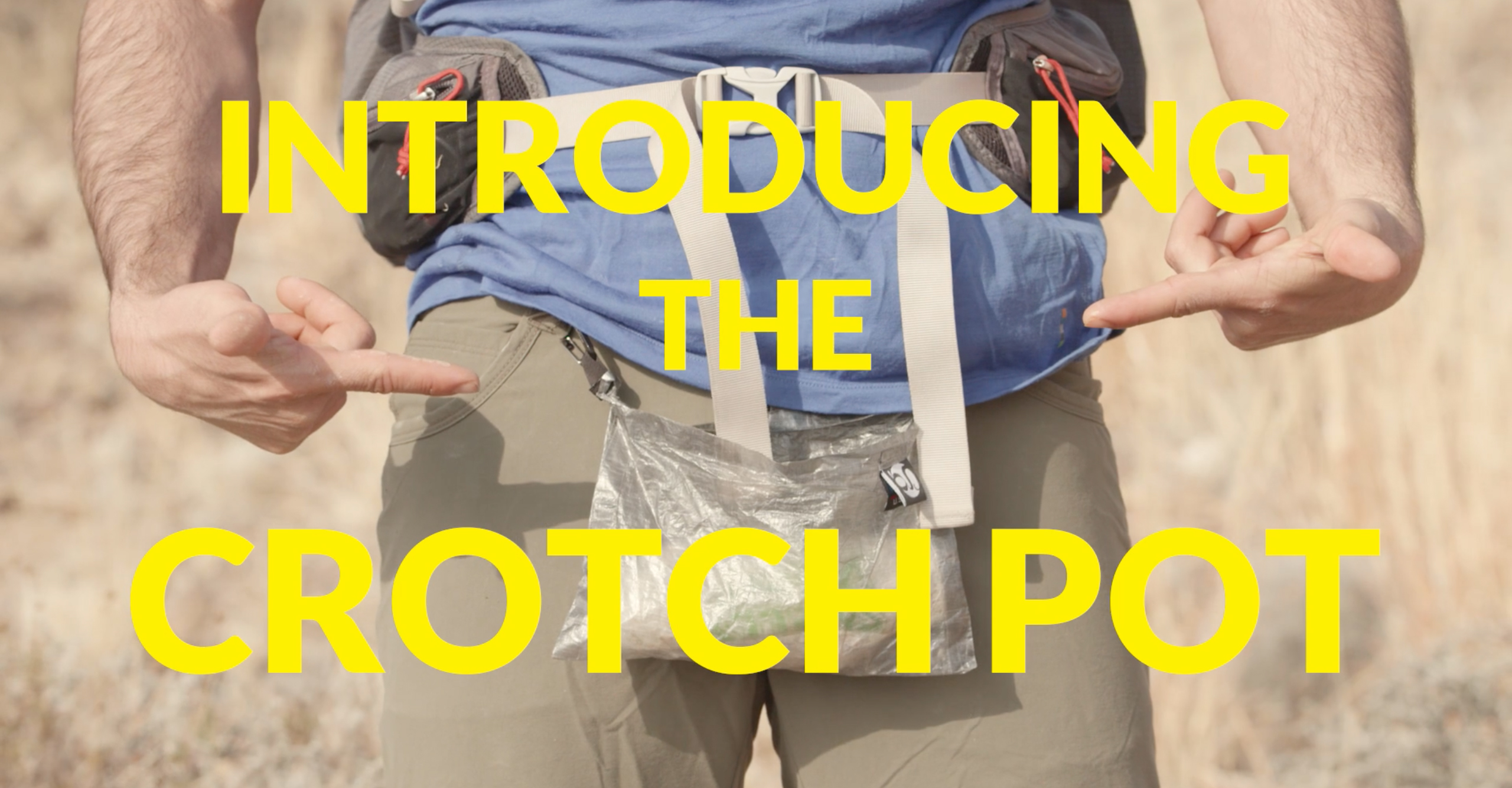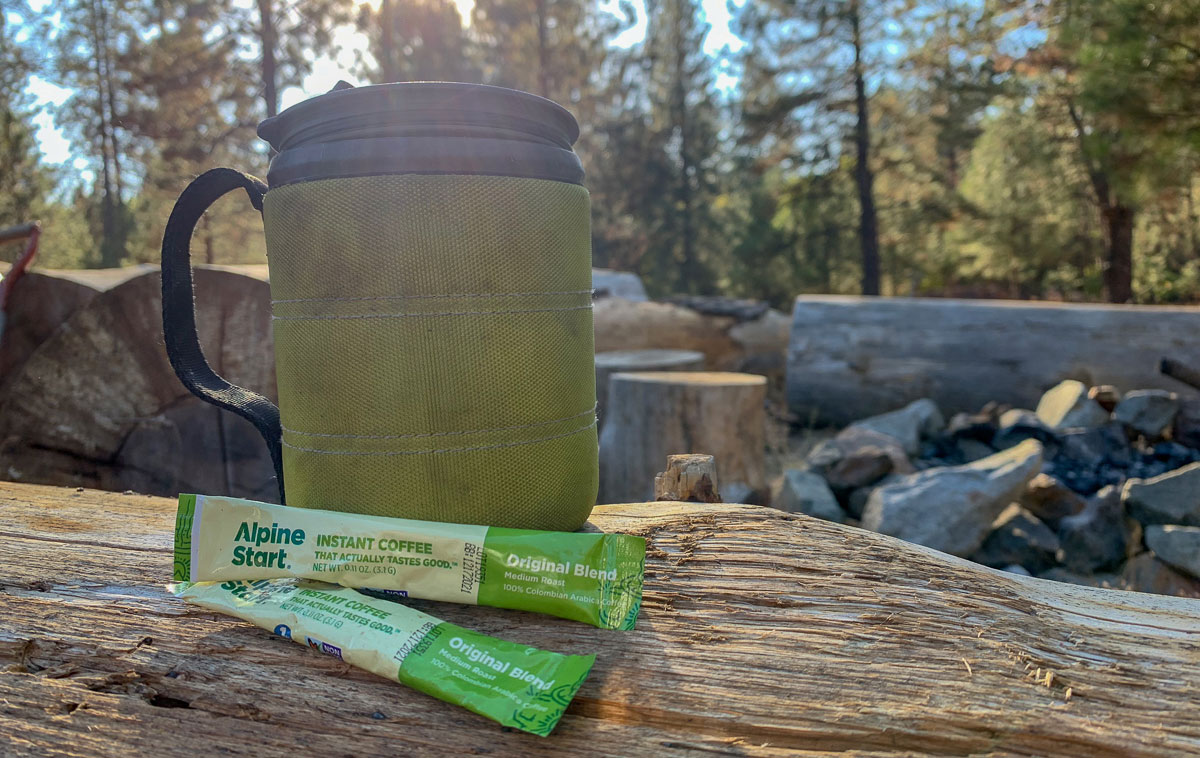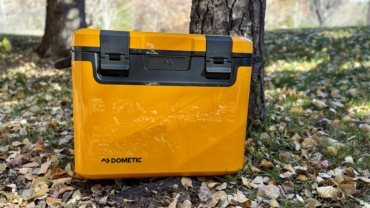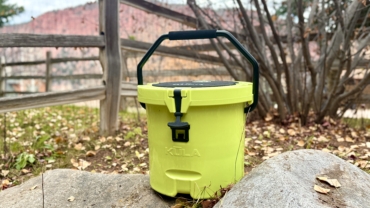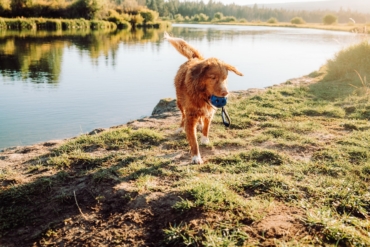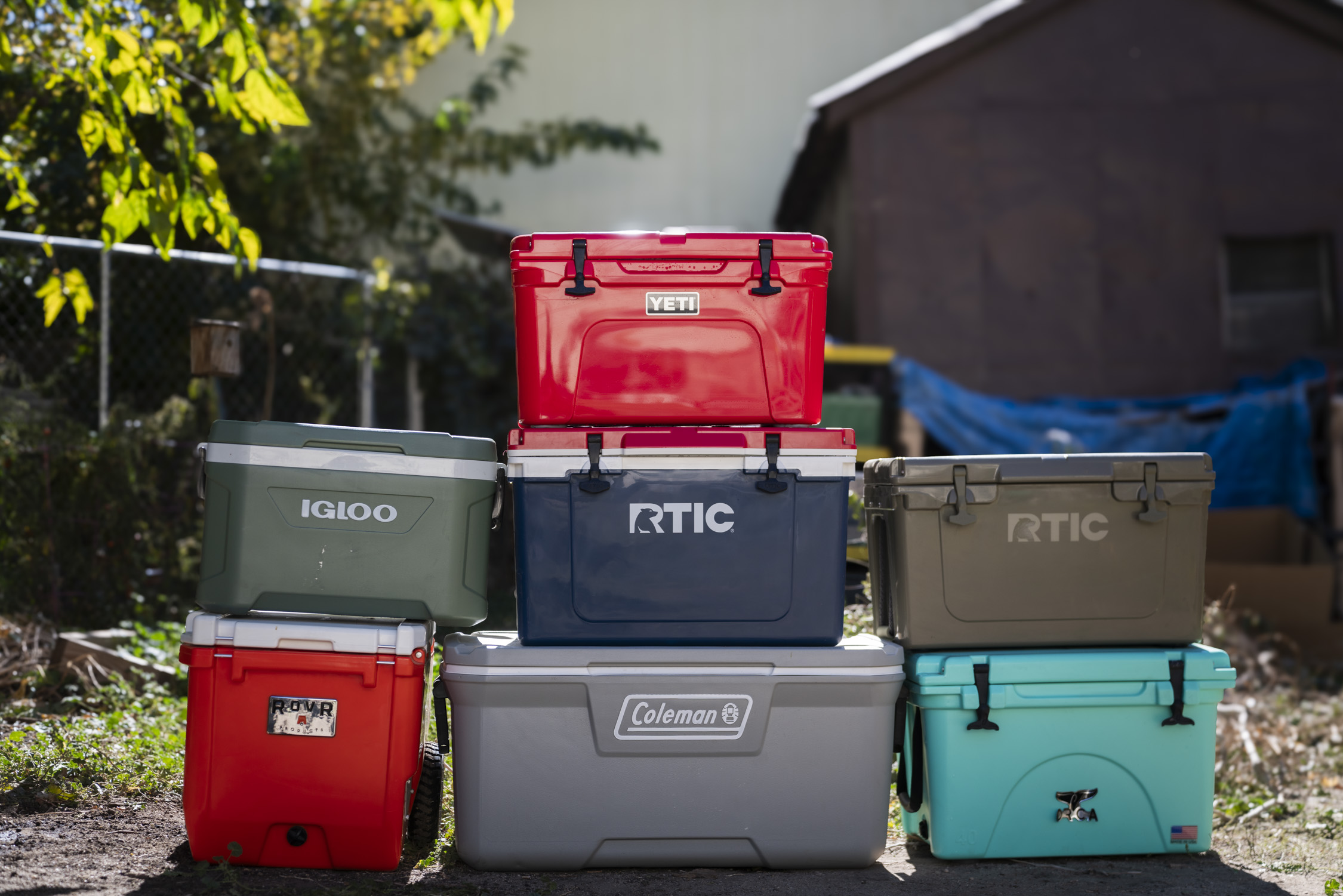In response to record-setting fire seasons on the West Coast, campfire and camp stove bans have become commonplace in many wilderness areas during backpacking season. So, how do we plan a food menu for backpacking without the option to cook or serve hot food? Don’t worry — we’ve got you covered.
During a recent backpacking trip on the Lost Coast Trail, I decided to try and master the art of no-cook camp cuisine. After working around the camp stove ban for five days in the California dry country, I honed in on a handful of ways to make stoveless cuisine a lot more fun than it sounds.
Note that most fire bans do not extend to contained camp stoves. But, 2020 has seen some sweeping and extremely strict regulations. And these tips and recipes may also serve ultralight backpackers who wish to forego the added weight of stoves.
Stoveless Camping Tips
Pre-Cook Big Meals
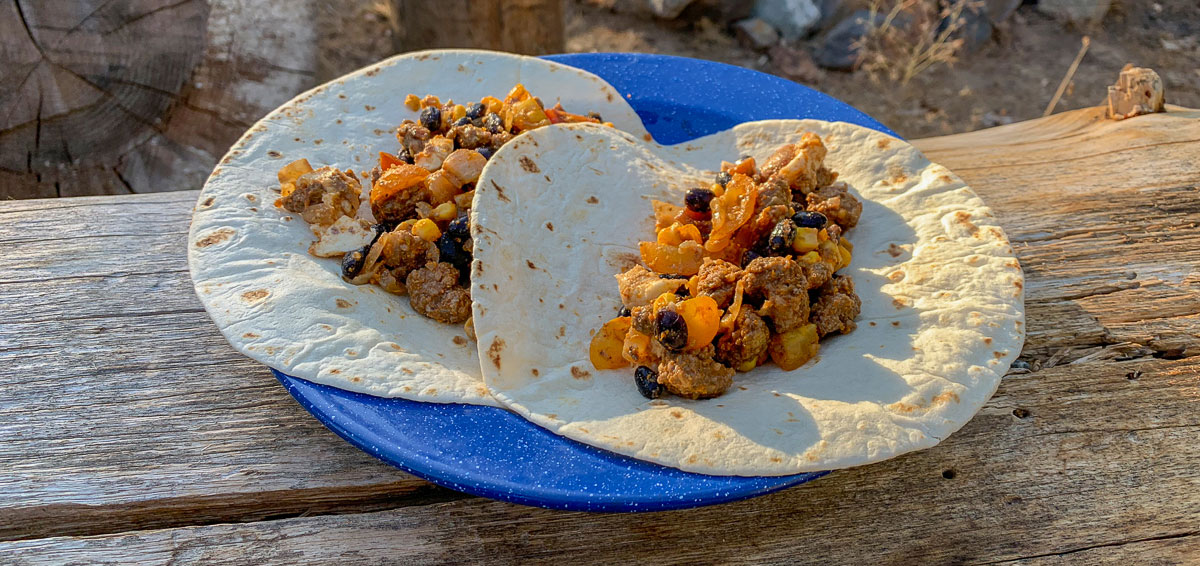
You can’t cook at camp, but you can still eat cooked food. Handle the cooking before departure and you can enjoy hearty feasts and (silver lining) less cleanup.
Hard-boiled eggs work great for protein (I use duck eggs for their harder shells). Taco salad, which can be cooked beforehand and carried in a ziplock to pair with tortillas, is always a hit. Go with soft shells unless you’re OK with nacho salad, and don’t forget the Cholula.
Pack Extra Snacks
Most cold breakfast options lack the sustenance to kick off a long day on-trail. If you’re used to bacon and eggs for breakfast and you’re relying on cereal during your trip, pack extra nutrient-rich snacks to supplement meals.
Some of my favorites are Thunderbird Bars — filling fruit/nut bars that lend plenty of energy — and Boon Butter— single-serving almond butter packets that are easy to down without stopping (try the espresso flavor for added energy).
Use Your Leftovers
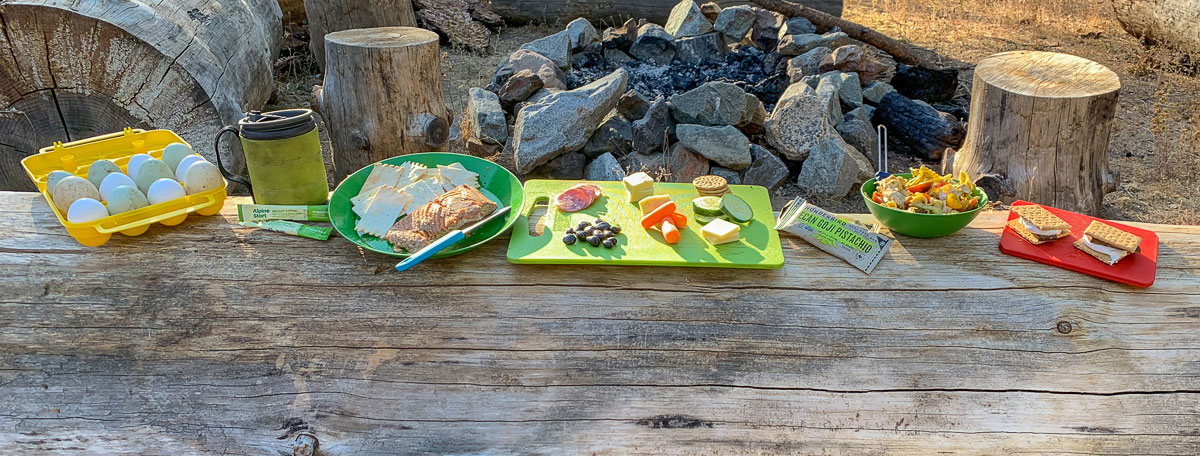
If you plan your portions just right, the trip ends with full bellies and empty bear canisters. More commonly, the trip ends with a few ounces of random food still in the pack. Avoid this and simultaneously add variety by using ingredients that work for multiple meals.
One example is powdered hummus, which can be rehydrated to go on a charcuterie board or can be used as a sandwich condiment. Another is avocados, which go great with, well, pretty much everything.
Time Meals to Avoid Spoiling
Food tends to go bad quickly under the beating sun of fire season. So, if cheese and cold cuts are on the menu, be sure to eat them early in your trip.
It’s OK to bring perishables on a backpacking trip for the top of the menu. However, you’ll want to pack plenty of food with a lasting shelf life for any trip longer than a couple of days. Overnight oats and pasta salad can be safely saved for the tail end of your travels without concern.
Forage and Fish
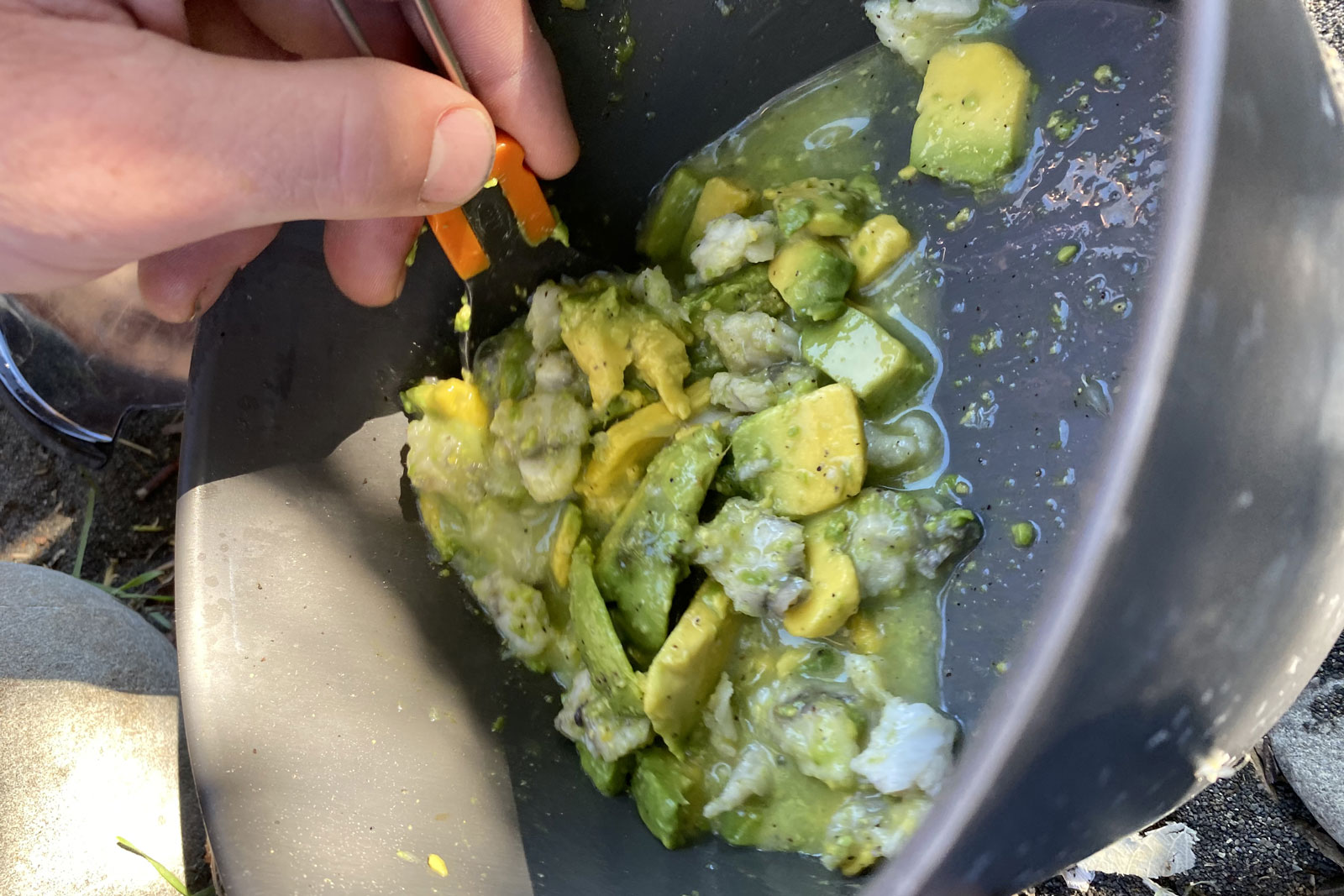
The fruits of nature are nothing to rely upon while backpacking. But, if you’re in an area known for natural food options, and it’s the right season to harvest them, tapping into the natural food chain adds a fun activity and a welcome addition to the menu.
For instance, rose hips were plentiful during my trip on the Lost Coast and made great cold-pressed tea. Similarly, I packed a fishing pole, limes, and avocados, and caught rockfish to make ceviche, which proved to be the most delicious meal of the trip.
Check the local fishing and foraging laws, do your research to know it’s edible and available and, again, pack plenty of food in case you come up empty-handed.
Cold Coffee Is a Must
Perhaps the scariest thing about a camp stove ban is the prospect of going without that morning cup of joe.
Thankfully, there’s instant coffee made just for this purpose. Alpine Start’s quality, powdered instant coffee comes in single-cup packets and serves cold or hot equally well. Plus, pack some dehydrated milk and cocoa powder for one of my all-time favorites — the backcountry mocha.
Flameless Camp Meals
Smoked Salmon and Cream Cheese
Pair Patagonia Provisions’ wild smoked salmon with cream cheese and crackers, and save the brand’s dried Chili Mangos for dessert.
Guac on the Halfshell
Cut an avocado open, sprinkle on some seasoning and mash it right there in the shell for a fun, no-mess fiesta.
Charcuterie Board

This is my go-to lunch menu item for backpacking where a little extra weight is permissible. It’s great because the leftovers serve as accouterment for other meals, too.
PB&J Burritos
Peanut butter and jelly on a flour tortilla never fails. Plus, tortillas pack a lot better than bread.
Pasta Salad
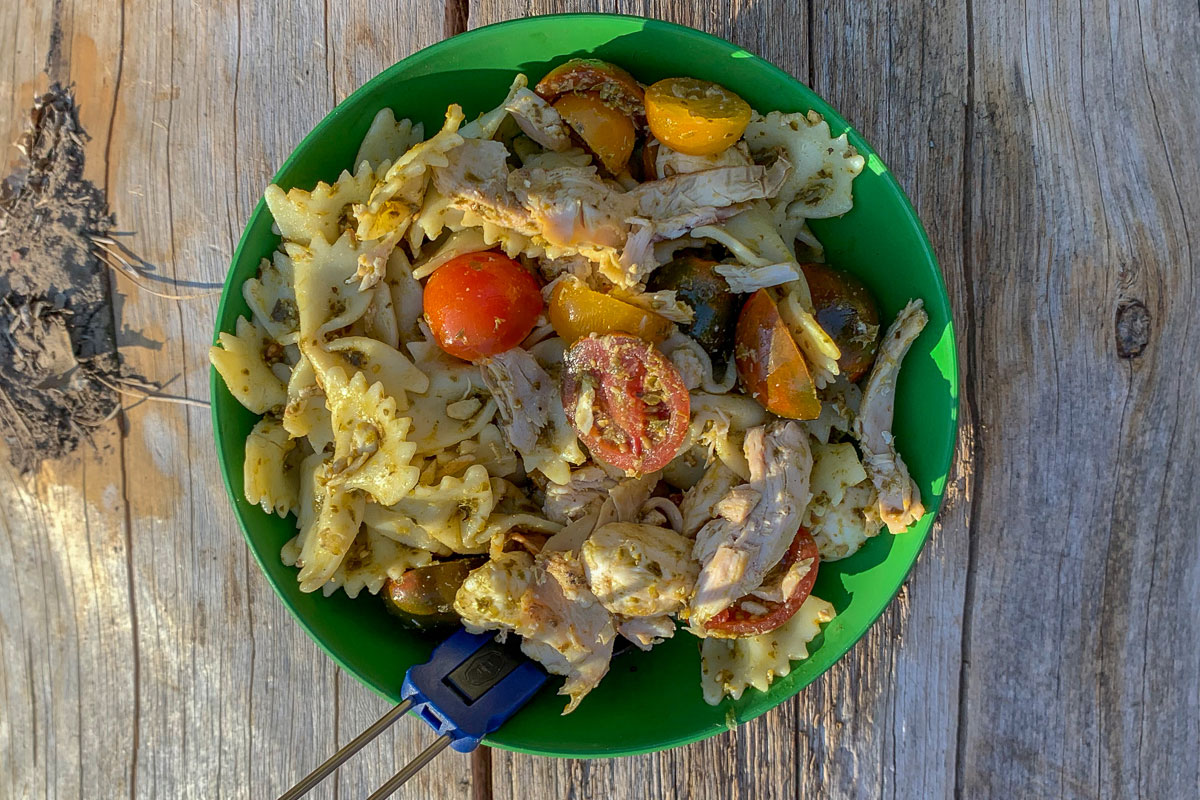
Hearty, easy to prep, and keeps well in a bear can. I like bow-tie pasta with pesto, cherry tomatoes, and mozzarella balls. Save this for dinner before your biggest push of the trip to carbo-load!
No-Roast S’Mores
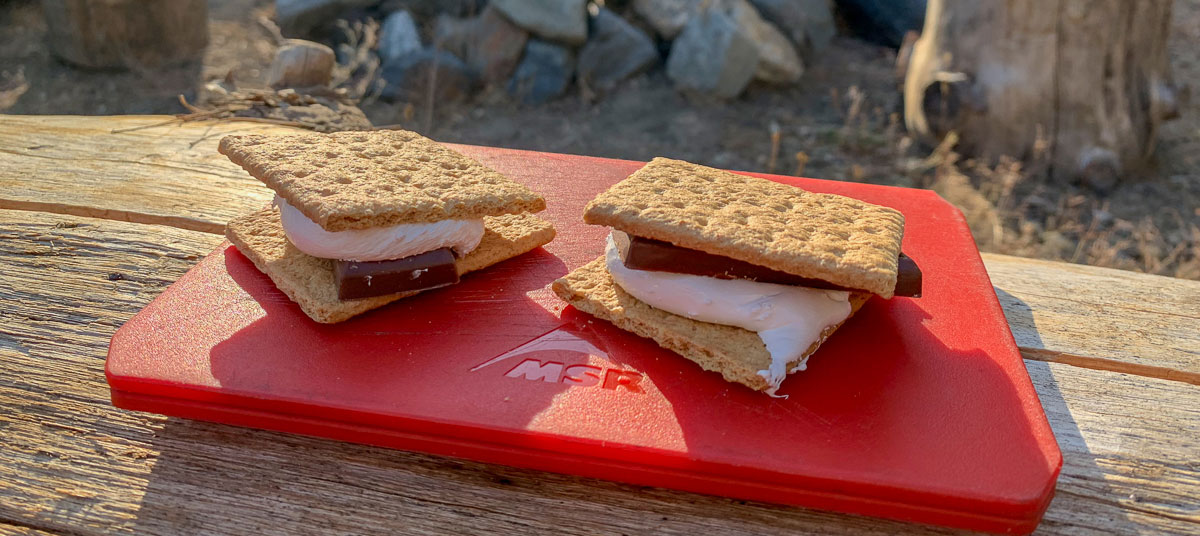
Jet-Puffed spreadable marshmallow cream works great for s’mores, yielding all the ooey-gooeyness of a roasted marshmallow. It also pairs great with peanut butter for the age-old kids’ favorite, the mighty “Fluffernutter” sandwich.
Mike Misselwitz is a former digital editor for SUP Magazine and a backpacking guide for Lasting Adventures, a National Parks guide and summer camp nonprofit program that provides scholarships for disadvantaged youth



